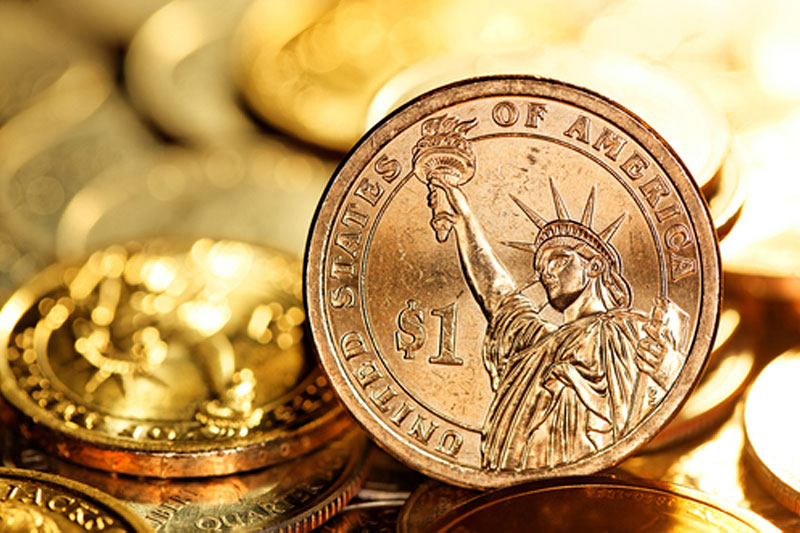Hedge funds cut NFLX, keep big bets on MSFT, AMZN, add NVDA
* Graphic: World FX rates in 2020 https://tmsnrt.rs/2RBWI5E
* Dollar retains advantage amid coronavirus crisis
* U.S. lawmakers trying to pass fiscal stimulus
* Travel curbs raise risk of global recession
By Stanley White
TOKYO, March 23 (Reuters) - The dollar rose against major
currencies on Monday as fresh declines in global stocks and
worries about tightening liquidity amid the worsening
coronavirus crisis accelerated the flight to cash.
The dollar rose against sterling toward its strongest since
at least 1985. The U.S. currency hit the highest in almost three
years against the euro.
The U.S. currency approached an 11-year peak against the New
Zealand dollar as the country prepared to enter lockdown for the
next 48 hours to contain the virus. The greenback also rose
toward a 17-year high against the Australian dollar.
U.S. stock futures and oil prices came under further
pressure in Asian trading, which pushed the dollar higher as
more people are placed under lockdown in an effort to contain
the virus, traders said.
Investors are also hoping for big fiscal spending to
mitigate the damage to the global economy, but uncertainty about
the spread of the virus is likely to support the dollar in the
future.
"We've moved from risk off to a phase where major players
are competing with each other for the safety of holding dollars
in cash," said Yukio Ishizuki, FX strategist at Daiwa Securities
in Tokyo.
"There are still a lot of investors who need to sell riskier
assets, and they want to hold their money in dollars."
The dollar rose 0.45% against the pound GBP=D3 to $1.1671,
approaching the strongest since at least 1985.
The dollar initially rose against the euro EUR=EBS to the
strongest since April 2017 but then pared gains to trade little
changed at $1.0707 per euro.
The greenback closed in on multi-year highs against the
Australian AUD=D3 and New Zealand NZD=D3 dollars as the
economic costs of self-isolation triggered the largest intraday
decline ever in New Zealand shares.
Against the yen JPY=EBS , the U.S. currency bounced between
gains and losses but last traded down 0.5% at 110.27.
Investors have been liquidating positions in safe-havens and
other riskier investments to keep their money in dollars due to
the uncertainty caused by the epidemic.
Major central banks have ramped up efforts to ease a global
dollar funding crunch, but the U.S. currency remains in demand
due to the high degree of uncertainty about the unknown flu-like
virus. Investors have to pay 71 basis points (bps) over interbank
rates to swap 3-month yen into dollars JPYCBS3M= ,
cross-currency basis swap rates showed on Monday. This is less
than a 139 bps premium reached on March 19, but swap rates are
still above average.
The dollar has also surged against many emerging market
currencies, highlighting the growing sense of risk aversion
across the globe.
In Asian trading, the dollar rose to a record high against
the Mexican peso MXN= and the highest since December 2018
against the Thai baht THB= .
So far this year the dollar is up 26% against Brazil's real
BRL= , up around 11% against the Korean won KRW= and up 19%
against the Indonesian rupiah IDR= .
Uncertainty about U.S. government stimulus added to the
tense mood in Asia.
Partisan battles in the U.S. Senate stopped a $1
trillion-plus coronavirus response bill from advancing on
Sunday, but talks continued over Democrats' demands for more
funding for medical care and state and local efforts to combat
the pandemic. The bill is Congress' third effort to blunt the economic
toll of a disease that has killed at least 420 people in the
United States and sickened more than 33,000.
Nearly one in three Americans was ordered to stay home on
Sunday to slow the spread of the disease, while Italy banned
internal travel as deaths there reached 5,476. U.S. President Donald Trump has approved disaster
deceleration requests from New York and Washington, while St.
Louis Federal Reserve President James Bullard warned
unemployment could reach 30% unless more was done fiscally.
Global markets have been upended in recent weeks as the
coronavirus spread from central China and governments responded
with increasingly strict restrictions on travel and daily life,
disrupting businesses and prompting consumers to stay at home
and rein in spending.
The virus has now been reported in more than 100 countries
and has claimed more than 13,000 lives.
